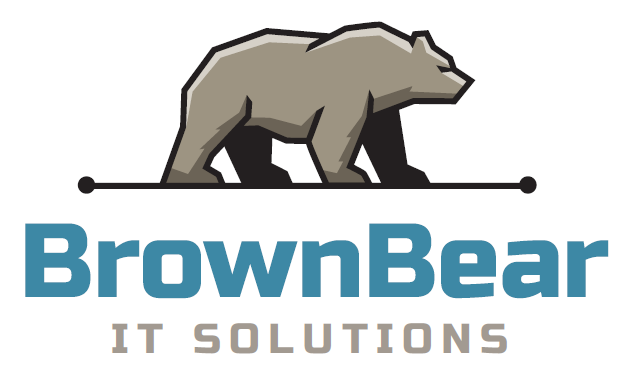Web design

by seostaff
Web design is not only about creating an aesthetically pleasing website. It’s also about ensuring that your site is easy to use, loads quickly, and is accessible on a variety of devices. In other words, good web design is essential for any business that wants to be successful online.” If you’re looking to create a website for your business, or improve the one you have, read on for some essential web design tips.
What is Web Design?
Web design is the process of creating a website. This can include anything from planning and creating the content to actually coding the site. A good web design will take into account the needs of the user, as well as the purpose of the site.
There are many different aspects to web design, and it is important to consider all of them when creating a website. The most important thing is to create a site that is easy to use and navigate, while still providing all the information that the user needs.
Creating a good web design can be a challenge, but it is definitely worth it in the end. A well-designed website will make it easier for people to find what they are looking for, and it will also make it more likely that they will return to the site in the future.
Finding Inspiration
When you’re starting a new web design project, it can be helpful to look at other websites for inspiration. This doesn’t mean that you should copy other sites, but it can give you some ideas of what is possible. There are many different places to find inspiration for your web design:
Look at other websites in your industry or niche. See what they are doing well and try to emulate that in your own design.
Look at websites outside of your industry or niche. Sometimes the best ideas come from unexpected places.
Use a web design gallery. There are many different galleries online that showcase great web design. This can be a great way to get ideas and see what is possible.
Use a web design tool. There are many different tools that can help you create a great website. These tools often have templates that you can use to get started, which can be a great way to find inspiration for your own design.
Creating a Wireframe
Before you start actually coding your website, it is important to create a wireframe. This is basically a blueprint of your site that will help you plan out the design and layout. A wireframe can be as simple or as complex as you want, but it should at least include the basic elements that you want to include on your site.
Creating a wireframe can be a helpful way to plan out your website and make sure that you know what you want to include before you start coding. It can also be a great way to get feedback from others on your design.
Designing Your Website
Once you have a wireframe for your website, it’s time to start designing the actual site. This is where you’ll really start to bring your vision to life. When designing your website, there are a few things to keep in mind:
Keep it simple. A good web design is one that is easy to use and navigate. You don’t want to overwhelm users with too much information or too many options.
Make it visually appealing. A well-designed website should be pleasing to the eye. Use colors and graphics that are attractive and easy on the eyes.
Use whitespace wisely. Whitespace is the empty space on a page. It can be used to separate different elements on a page and make it easier to read.
Use typography effectively. The way that you use typography can have a big impact on the overall look and feel of your website. Choose fonts that are easy to read and that compliment the overall design.
Coding Your Website
Once you have designed your website, it’s time to start coding it. This is where you’ll take all of the designs and turn them into actual code. If you’re not a programmer, you can hire someone to do this for you.
When coding your website, there are a few things to keep in mind:
Make sure your code is clean and well-organized. This will make it easier to maintain and update your website in the future.
Use comments to document your code. This will make it easier for others to understand what you’ve done.
Test your website regularly. This will help you catch any errors that you may have missed.
Launching Your Website
Once your website is coded and tested, it’s time to launch it. This is where your website will go live and be accessible to the world. When launching your website, there are a few things to keep in mind:
Choose a good domain name. This is the address that people will use to access your site. Make sure it is easy to remember and spell.
Find a good hosting provider. This is the company that will host your website and make it available to the world. There are many different providers to choose from, so do some research to find one that is well-reviewed and has good customer service.
Set up your email accounts. You’ll need an email account for your website so that people can contact you. You can set up a free account with Gmail or another provider.
Promote your website. Once your website is live, you’ll need to let people know about it. You can do this by submitting it to directories, telling your friends and family, and promoting it on social media.
What are the Different Types of Web Design?
- Responsive web design
- Adaptive web design.
There are many different types of web design, and each has its own advantages and disadvantages. The most important thing is to find a style that works well for the specific needs of the website.
Responsive web design
Responsive web design is a type of web design that allows a website to be viewed on any device, regardless of the size of the screen. This is achieved by using media queries to adjust the CSS code so that it looks good on any size screen.
The advantage of responsive web design is that it makes it much easier for people to view a website on any device, as the site will automatically adjust to the size of the screen. This can be particularly useful for people who are using mobile devices, as they can still access all the information on a website without having to zoom in and out.
The downside of responsive web design is that it can sometimes make a website look cluttered, as there is often a lot of extra space on smaller screens. This can be avoided by using a simple layout and keeping the amount of content to a minimum.
Adaptive web design
Adaptive web design is similar to responsive design web design, but it uses a different approach to media queries. Rather than using media queries to adjust the CSS code, adaptive web design uses a separate stylesheet for each screen size.
The advantage of this approach is that it ensures that a website always looks its best, no matter what device it is being viewed on. It also makes it easier to add new content, as there is no need to make changes to the existing CSS code.
The downside of adaptive web design is that it can be more difficult to maintain, as there are multiple stylesheets to keep track of. It can also be more expensive, as it requires more development time to create separate stylesheets.

Web hosting is a service that allows organizations and individuals to post a website or web page onto the Internet. A web host, or web hosting service provider, is a business that provides the technologies and services needed for the website or webpage to be viewed on the Internet. Websites are hosted or stored, on special computers called servers. When Internet users want to view your website, all they need to do is type your website address or domain into their browser. Their computer will then connect to your server and your web pages will be delivered to them through the browser.
Most hosting companies require that you own your domain name in order to host with them. If you do not have a domain name, the hosting companies will help you purchase one.
There are two main types of web hosting: shared and dedicated.
Shared Hosting: Shared hosting is the most popular type of web hosting. With shared hosting, multiple websites are hosted on the same server, and each website has its own directory on that server.
Dedicated Hosting: Dedicated hosting is a type of web hosting in which you lease your own server. This gives you more control over the server, and you are responsible for all the maintenance and upkeep. However, it is also more expensive than shared hosting.
Virtual Private Server (VPS) Hosting: VPS hosting is a type of web hosting that gives you more control over your server. With VPS hosting, your website is hosted on a server that is partitioned into multiple virtual servers. Each virtual server can run its own operating system and can be rebooted independently.
Cloud Hosting: Cloud hosting is a type of web hosting that uses a network of remote servers to store your website. With cloud hosting, your website is hosted on a server that is connected to a network of other servers. This allows for more flexibility and scalability, as you can easily add or remove resources as needed.
What are the Different Types of Domain Names?
Domain names are used to identify one or more IP addresses.
Domain names are often used to identify websites, but they can also be used for other purposes such as email addresses and file sharing.
There are two main types of domain names: top-level domains (TLDs) and second-level domains (SLDs).
Top-Level Domains (TLDs): Top-level domains are the highest level of domain names, and they are usually used to identify countries or regions. For example, “.us” is the country code top-level domain (ccTLD) for the United States, and “.uk” is the ccTLD for the United Kingdom.
Second-Level Domains (SLDs): Second-level domains are lower in the hierarchy than TLDs, and they are usually used to identify specific organizations or businesses. For example, “example.com” is a second-level domain that could be used by any organization, and “google.com” is a second-level domain that is specifically used by Google.
Subdomains: Subdomains are domains that are lower in the hierarchy than SLDs, and they are often used to identify specific sections of a website. For example, “mail.example.com” could be used as a subdomain for an email service, and “news.example.com” could be used as a subdomain for a news section.
How Do I Choose a Domain Name?
When choosing a domain name, you should consider your target audience, your business goals, and the type of website you want to create.
Your domain name should be short, easy to remember, and relevant to your business.
You should also avoid using hyphens or numbers in your domain name, as this can make it harder for people to remember.
If you are creating a website for a local business, you may want to include your city or state in your domain name.
If you are creating a website for a national or international business, you may want to consider using a “.com” domain name. This is the most popular top-level domain, and it can help you reach a larger audience.
You can also use other top-level domains such as “net”, “.org”, or “.biz”. However, these domains are not as well known, and they may not be as effective in reaching your target audience.
How Do I Register a Domain Name?
You can register a domain name through a domain registrar. A domain registrar is a company that manages the reservation of Internet domain names.
Once you have chosen a domain name, you can use a domain registrar to check if it is available. If it is available, you can then register it for a certain period of time, usually one to three years.
Once you have registered a domain name, you will need to set up a web hosting account. A web hosting account is a service that allows you to store your website on a server so that it can be accessed by people on the Internet.
There are many different web hosting providers, and you should choose one that offers the features you need for your website. Once you have registered your domain name and set up your web hosting account, you can create your website. You can do this yourself or hire a web designer to do it for you.
FAQS
What does a web designer do?
A web designer is responsible for creating the look and feel of a website. This involves designing the layout, content, graphics, and navigation of the site. A web designer may also be responsible for coding the site using HTML, CSS, and other web development technologies.
What skills do I need to be a web designer?
To be a successful web designer, you will need strong communication and computer skills. You should be able to work independently and as part of a team. You will also need to be familiar with various web design software programs, such as Adobe Photoshop and Dreamweaver.
What education do I need to become a web designer?
There are many educational paths you can take to become a web designer. Many designers have a bachelor’s degree in graphic design or a related field. However, it is not required to have a formal education to be successful in this career. There are many online and offline resources that can teach you the skills you need to be a successful web designer.
What are some common challenges faced by web designers?
Some common challenges faced by web designers include staying up-to-date with web standards and technologies, designing for different screen sizes and devices, and managing client expectations.
Is web designing easy?
Web design can be challenging, but it is a rewarding career. With hard work and dedication, anyone can learn the skills necessary to be a successful web designer.
Conclusion
In conclusion, creating a website involves choosing a domain name, registering it with a domain registrar, and setting up a web hosting account. You can then create your website yourself or hire a web designer to do it for you. To be successful in this career, you will need strong communication and computer skills. You should also be familiar with various web design software programs. There are many educational paths you can take to become a web designer, but it is not required to have a formal education. With hard work and dedication, anyone can learn the skills necessary to be a successful web designer.
Recommended Posts

Quick Bytes – Web Design and SEO Company in Memphis
December 2, 2022

Vpn
November 28, 2022

SEO-Search engine optimization
November 21, 2022

